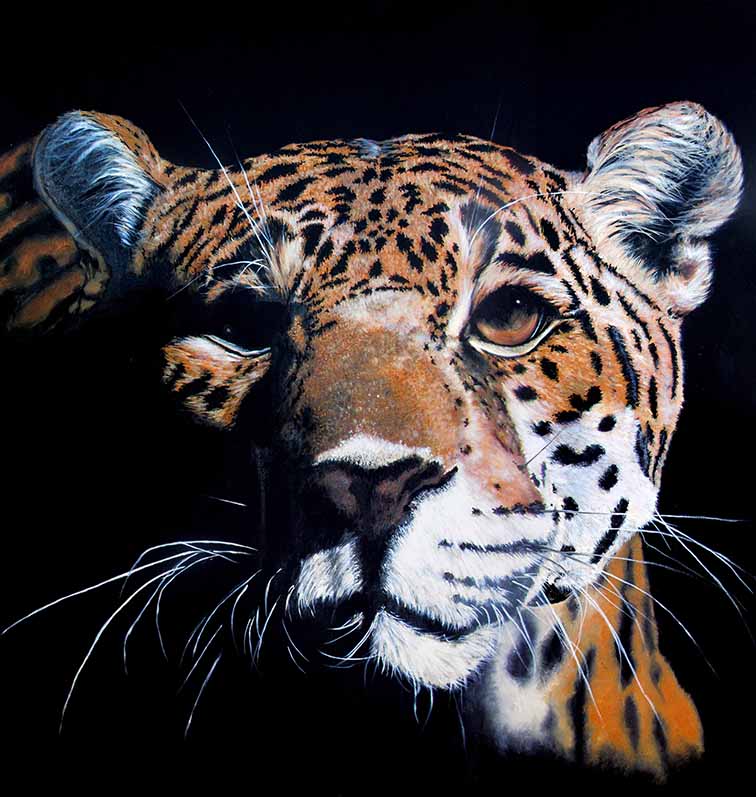
The name Leopard comes from the Greek word leopardus, which is a combination of leon (lion) and pardus (panther). These night hunters safely navigate through the jungle using long whiskers to “feel” a path through the darkness.
Their spots and rosettes can be either round or square to make the very best use of the camouflage available. The dark coats of black leopards – also known as panthers – offer better camouflage in forest or mountain terrain.
Leopards can run up to 36 mph (58 kph), jump forward 20 feet (6 meters) and leap 10 feet (3 m) straight up. Their ears can hear five times more sound than the human ear.
Pixels: 5310 x 5543 pixels (84.2 MP)
Image Size: 44.5 x 46.5 inches (100 dpi)
Format: PDF (20 MB)
Price: €20
Behind the Canvas
Can you see the soul through the eyes? This is the first of a series of ‘close-up’ paintings I am making based around this subject, and concentrating specifically on the eyes and aura of large birds and mammals, including peacocks and gorillas.
Please see also my Generation Y portrait.
More on Leopards
Leopards prefer warm-blooded prey such as mammals, but have been known to eat birds, reptiles and even insects. They are opportunistic and stealthy hunters. Once within 3 to 10 meters, leopards will pounce on their unsuspecting victim. Although their legs are short they are incredibly muscular, and their powerful paws and jaw easily overpower their prey, which is paralyzed with a bite through the neck.
Although hunting normally takes place on the ground, leopards use their unique agility to climb trees with their kill. This keeps it safe from wandering lions and hyenas. Leopards can carry carcasses weighing more than 50 kg up vertical tree trunks. Guts of large prey are pulled out and discarded before it begins consuming its meals. They readily eat rotten meat and will feed on a stored carcass for up to four days.
Despite being classified as a roaring cat, leopards usually bark when they have something to say, sounding remarkably like a wood saw! Two to four cubs are born in each leopard litter, although generally only half of the cubs will survive to adulthood. Once they reach adulthood, leopards usually live in the wild for somewhere between 12 and 17 years.
About the Night Hunter
Downloadable medium-format PDF image scanned from Elena’s original oil painting. This is a medium-sized PDF, ideally suited for printing on canvas. A 2.75 inch (7 cm) ‘Museum style’ white margin is added to each side of the picture to allow for stretching/mounting. After completing the payment process, you will immediately receive a download link for your picture.




